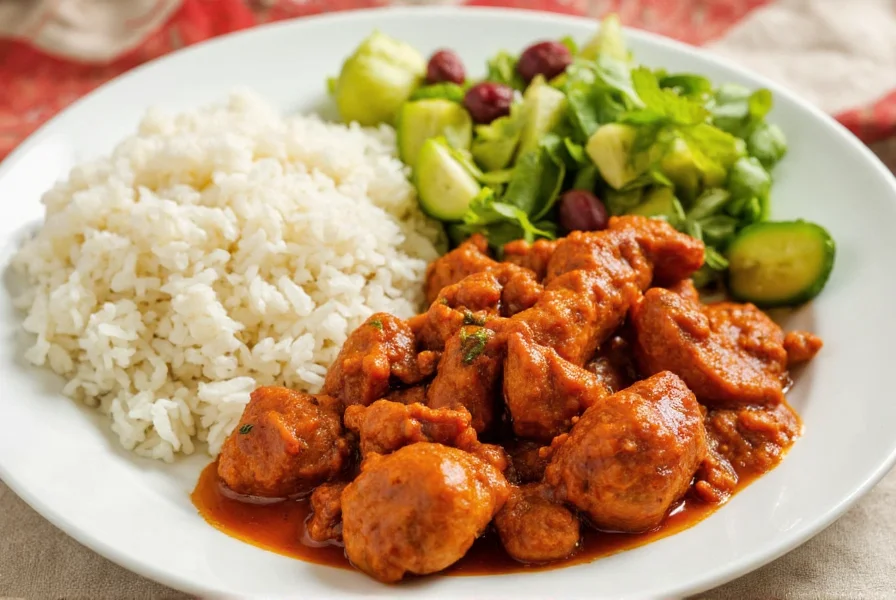Why You Need to Try This Spicy Ethiopian Chicken Dish Right Now!
Table of Contents
- Introduction to Ethiopian Cuisine
- What Is Doro Wat?
- The Spice Blend That Makes It Unique
- How to Make Authentic Doro Wat at Home
- Regional Variations Across Ethiopia
- Buying Guide for Key Ingredients
- Conclusion
Introduction to Ethiopian Cuisine
Ethiopian cuisine is a treasure trove of flavor, culture, and tradition. Known for its bold use of spices and unique cooking methods, it offers a sensory experience that’s hard to match. At the heart of Ethiopian food lies the doro wat, a spiced chicken stew often considered the national dish of Ethiopia.
Doro wat is more than just a meal — it's a celebration, often served during holidays like Enkutatash (Ethiopian New Year) or religious festivals such as Easter. Whether you're a seasoned spice lover or new to African flavors, doro wat promises an unforgettable culinary journey.

What Is Doro Wat?
Doro wat is a slow-cooked chicken stew infused with berbere, a signature Ethiopian spice blend. It’s typically made with bone-in chicken pieces, hard-boiled eggs, and simmered in a rich, red sauce made from onions, garlic, ginger, and oil. The result? A deeply savory, spicy, and slightly sweet dish that warms both the body and soul.
Key Features of Doro Wat:
- Rich, complex flavor profile
- Slow-cooked to perfection
- Served with injera (sourdough flatbread)
- Traditionally eaten by hand using injera as a utensil
| Characteristic | Description |
|---|---|
| Spiciness Level | Mild to very hot (depends on berbere quantity) |
| Cooking Time | 60–90 minutes |
| Main Protein | Chicken (bone-in preferred) |
| Serving Style | Shared platter on injera |
The Spice Blend That Makes It Unique
The magic of doro wat comes from its spice mix — especially berbere. This warm, earthy, and fiery blend includes dried chili peppers, paprika, ginger, garlic, cardamom, coriander, and more.
Berbere vs Other Spice Blends
| Spice Mix | Origin | Flavor Profile | Common Use |
|---|---|---|---|
| Berbere | Ethiopia | Smoky, spicy, sweet, earthy | Doro wat, stews, lentils |
| Garam Masala | India | Earthy, warming, nutty | Curries, rice dishes |
| Ras el Hanout | Morocco | Aromatic, floral, peppery | Tagines, meats |
Practical Tip: Making Your Own Berbere
If store-bought versions don’t excite your taste buds, try making your own. Here’s a simple recipe:
- 4 tbsp paprika
- 1 tbsp cayenne pepper
- 1 tsp ground ginger
- 1 tsp ground allspice
- ½ tsp ground cloves
- ½ tsp cardamom
- ½ tsp fenugreek
- 1 tsp salt
Mix well and store in an airtight jar away from light.

How to Make Authentic Doro Wat at Home
Ready to bring a taste of Ethiopia to your kitchen? Let’s walk through the steps of making a classic doro wat recipe. This version includes hard-boiled eggs, a traditional touch that adds richness and texture.
Ingredients:
- 1 whole chicken, cut into pieces (or 4–6 thighs/drumsticks)
- 2 medium onions
- 3 cloves garlic
- 1-inch piece of ginger
- 2 tbsp berbere
- ¼ cup niter kibbeh (spiced clarified butter)
- 2 hard-boiled eggs
- Salt to taste
- Water as needed
Instructions:
- Heat the niter kibbeh in a heavy-bottomed pot.
- Add finely chopped onions and sauté until golden brown (about 15 minutes).
- Stir in minced garlic and grated ginger, cook for 2–3 minutes.
- Add the chicken and berbere, coating everything well.
- Pour in water just enough to cover, then bring to a boil and reduce to a simmer.
- Cover and let it cook slowly for 45–60 minutes, stirring occasionally.
- Before serving, gently add the peeled boiled eggs and heat through.
Pro Tips:
- Use bone-in chicken for deeper flavor.
- Simmer low and slow to let the flavors develop fully.
- Niter kibbeh can be replaced with regular butter and extra spices (turmeric, cardamom, etc.).
- Try adding a splash of vinegar at the end if you like a tangy note.
Regional Variations Across Ethiopia
While doro wat is loved nationwide, regional variations reflect local tastes and traditions.
Popular Regional Versions:
| Region | Variation | Unique Feature |
|---|---|---|
| Tigray | Zigni Wat | Milder, with more tomato-based sauce |
| Oromia | Kik Wat | Lentil-based, vegetarian-friendly |
| Gondar | Fenugreek-infused Doro Wat | Strong herbal notes, often paired with flatbread |
These regional takes show how adaptable and beloved doro wat truly is across Ethiopia.
Buying Guide for Key Ingredients
To make authentic doro wat, having the right ingredients matters. Here’s a handy guide to help you choose the best products when shopping.
Top Products for Making Doro Wat
| Product | Features | Advantages | Target Audience | Best For |
|---|---|---|---|---|
| McCormick Berbere Spice Blend | Premixed, convenient, widely available | Saves time; good for beginners | Newcomers to Ethiopian cuisine | Quick meals without sacrificing authenticity |
| Organic Niter Kibbeh Substitute | Clarified butter infused with herbs | Enhances flavor complexity | Home chefs seeking depth of flavor | Slow-cooked dishes and sauces |
| Free-Range Chicken Thighs | Dark meat with skin and bones | Moisture-rich, flavorful | Chefs who prefer traditional recipes | Doro wat requiring deep chicken flavor |
| Homemade Injera Starter Kit | Includes teff flour and starter culture | Authentic base for serving | Cultural enthusiasts | Traditional platter presentation |
Where to Buy:
- Ethiopian specialty stores – Best for fresh injera and homemade-style berbere.
- Online marketplaces (Amazon, Etsy) – Great for rare spices and kits.
- Supermarkets – Look for international aisles or organic sections.

Conclusion
Ethiopian cuisine, particularly the iconic doro wat, is a feast for the senses. With its deep-rooted cultural significance and vibrant flavors, it’s no wonder this dish has captured hearts around the globe.
Whether you're experimenting with spices, hosting a dinner party, or simply looking to explore global flavors, doro wat offers something special. So why not grab some berbere, break out the pot, and start simmering your way into Ethiopian comfort food?

Now that you’ve got the tools, techniques, and inspiration, it’s time to bring the warmth of Ethiopia to your table — one bite at a time.










 浙公网安备
33010002000092号
浙公网安备
33010002000092号 浙B2-20120091-4
浙B2-20120091-4